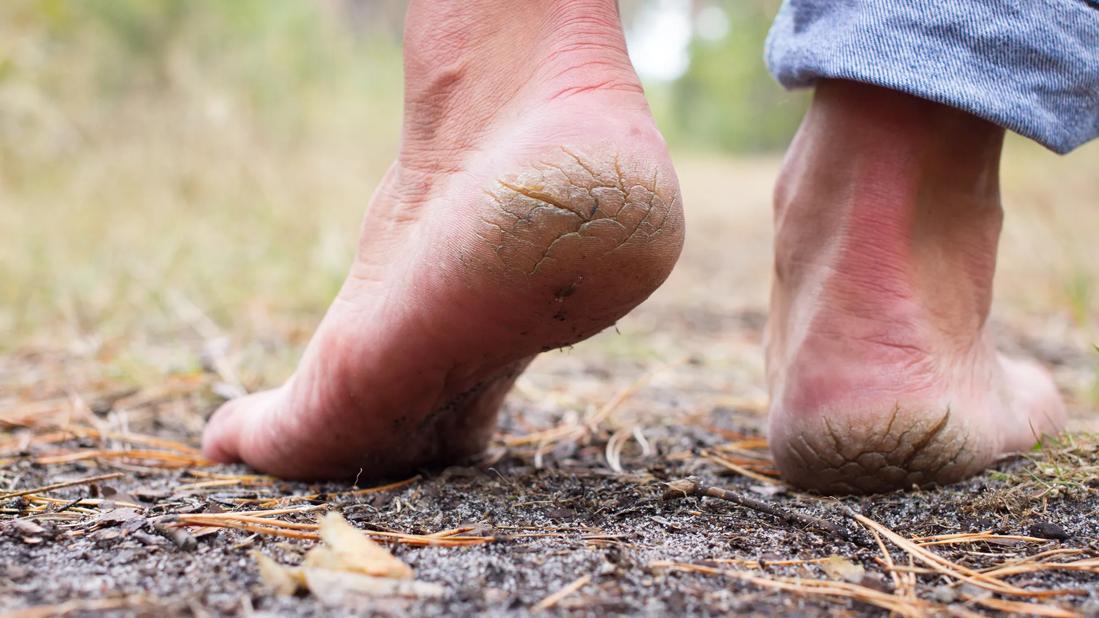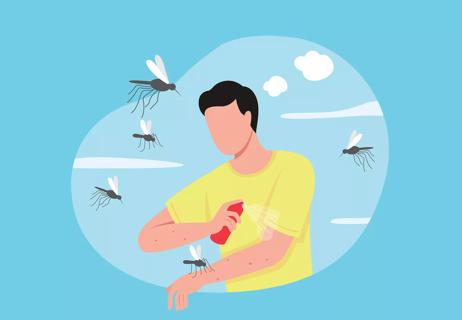Keep your tootsies clean, moisturized and consider wearing socks at night

Ugh, there’s nothing like feeling a dry, sandpapery heel graze against your leg or watching it snag a new pair of tights. And cracked heels can make you too embarrassed or ashamed to show off those pretty toes.
Advertisement
Cleveland Clinic is a non-profit academic medical center. Advertising on our site helps support our mission. We do not endorse non-Cleveland Clinic products or services. Policy
But there are some things you can do to get your feet ready for primetime sandal season.
Your heels take a lot of stress and pressure — just think about how much you use them as you walk around each day.
This can cause the skin on your heels to become thick and hard and eventually lead your heels to develop a rough texture or crack-like appearance called heel fissures, says dermatologist Lindsey Moore, MD.
“Cracked heels can be a health risk, too. They’re painful and can lead to a decreased barrier of the skin, setting you up for a potential infection,” says Dr. Moore. “It’s important not to ignore your feet in taking good care of your body.”
In most cases, cracked heels are a result of dry skin.
“Dry skin is common and can be caused by a variety of things,” Dr. Moore says. “Often, it’s a combination of a few different factors.”
These factors can include:
Advertisement
There are some things you can do to take your heels from steel wool to buttery soft. Dr. Moore shares tips for taking care of those tough tootsies to heal your heels — and keep them healthy.
You should wash your feet daily using water that’s not too hot — lukewarm is best. Taking care not to scrub, use a gentle, fragrance-free soap, like the Dove® Sensitive Skin Beauty Bar or Cetaphil® Gentle Skin Cleanser. It’s OK to soak your feet for a few minutes, but just a few.
“You don’t want to soak them too long, or you risk weakening the skin barrier, which allows for excessive moisture loss,” Dr. Moore advises.
After you soak or shower, dry your feet and then apply a lotion or cream.
“Look for products with ceramides, which are molecules that help trap water in the skin and restore its natural barrier,” Dr. Moore explains.
Once your heels are healthy, keep up the routine by using an exfoliating moisturizer, like an over-the-counter (OTC) urea cream (20% or 40% concentration) or AmLactin® lotion. It will help remove dead skin and keep those heels soft and supple. It takes about two weeks of regular use to see a response with these OTC treatments.
After you’ve lotioned up, give it a couple of minutes to sink in. You may also want to use an occlusive ointment, such as petroleum jelly, which creates something of a sealant to secure the moisture you’ve just applied.
Not a sock person? It might be time to reconsider — overnight, at least. Slip into thin, 100% cotton socks to retain the moisture in your feet while you sleep.
And that sock habit is one you should adopt more often, not just when your heels are in need. You may not think of socks as a protective garment, but they help protect your feet from the outside world.
“Socks add an additional layer between your skin and the environment and can limit damage to the outer layer of the skin,” Dr. Moore says.
When it comes to cracked heel treatments, the skin care aisle is full of products that claim to soften and smooth your feet. But are callus shavers, graters, pumice stones or electronic foot files safe? Dr. Moore says these tools are OK when used as directed and in moderation. But you’re not trying to grate your feet like a fine Parmesan!
“They can be used on either wet or dry feet,” she shares. “Just don’t file over any areas of inflamed, itchy or sensitive skin, which can make things worse.”
What about using foot peels on rough heels?
“These chemical peels can gently exfoliate the outer layers of skin, leading to an improved appearance and softer feel,” Dr. Moore explains. “They can be done safely but should be avoided if you have or are prone to other skin conditions.”
Advertisement
This includes:
They can be. While most cracked heels can be treated at home, sometimes, dry skin can be a sign of a more serious underlying condition.
“Dry, flaky skin can be a sign of atopic dermatitis, eczema, psoriasis, a fungal infection or nutritional deficiencies, among other conditions,” Dr. Moore reports.
And in some cases, dry, cracked skin on the heels could signify diabetes.
If you’re dealing with an underlying condition, it’s best to seek treatment from a healthcare provider rather than try to get rid of the dry skin on your own.
The most common cause of cracked heels is dry skin, which you can treat at home. And once you’ve gotten those heels back on track, establish a heel care routine that will help ensure that your feet are sandal-ready any time of year.
If you’ve tried it all and your heels continue to crack, it’s time to schedule a consultation with a dermatologist who can offer more advice on how to fix cracked heels.
“A dermatologist can evaluate you for an underlying pathologic process that may be contributing to your dry skin,” says Dr. Moore. “They can also offer advice on gentle skin care routines and safe products to keep your skin healthy.”
Advertisement
Advertisement
Learn more about our editorial process.
Advertisement

At-home treatments and lifestyle changes may help ease the symptoms and improve the appearance of varicose veins — but they aren’t a cure

Scalp cancers can occur because of long-term sun exposure

Some gentle soap and warm water go a long way when you’re washing these cosmetic tools regularly

Try exfoliating and using salicylic acid to treat this pesky skin care issue

Lip balms and ointments, drinking more water and running a humidifier can help eliminate dry lips

Try seated and standing exercises to help lengthen and strengthen the muscles that support your plantar fascia

If it’s soft, movable, near the surface and not painful, you’re probably OK — but see a healthcare provider if you’re concerned

Keep ‘mozzies’ at bay by avoiding scented body products, beer and certain colored clothes

If your nose is constantly running, it could be allergies, chronic sinusitis, nasal polyps or other concerns

If you find yourself obsessing over rejection or a one-sided relationship, you’re likely stuck in limerence

Alcohol is a depressant and can interfere with your sleep, mood and more